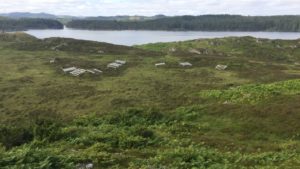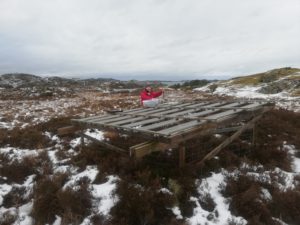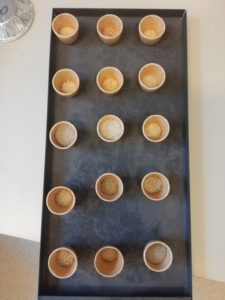Hei everyone!
My name is Nora. I´ve finished my Bachelor´s in Biology in Germany last year and arrived in Bergen in January. This is my first semester as a master student of Biodiversity, Evolution and Ecology.
One of the main reasons I decided to apply for the master´s was, that I love spending time outdoors and am always trying to shift as much of my work outside as possible. What I found most interesting, is how nature works and what the connections between different ecological aspects consist of. Also, I believe that is it crucial to understand how we are affecting the environment and how conditions and biodiversity are changing. And which environment could be more perfect for learning about nature than the stunning landscapes of Scandinavia?
In the first place, I wanted to participate in a BIO229-project this semester, because I was hoping to get a chance to extend my field work experience and learn about new research techniques, also in the lab. This course is perfect for me because it adds a practical component to my otherwise very theoretical semester.
The BIO299-project I am working on is called ` Karbonfanger eller Klimabombe ` and consists of field work as well as lab work. It is part of a broad project which aims to assess how much carbon there is stored in the soil of Norway’s coastal landscapes and whether it is being released or stored in the ground. My supervisors are Vigdis Vandvik and Siri Vatsø Haugum.
Also in the project is another master student: Helene. Helene and I were aiming to go to beautiful Lygra for fieldwork second other week. Lygra is a tiny and very peaceful island in Lurefjorden, about 40km North of Bergen. In large parts it consists of Heathland in different succession phases. Heathlands are usually semi-natural landscapes that need to be managed in order to remain intact. This management traditionally consists of regular prescribed burning (around every 20 years) and grazing. Usually Calluna vulgaris (L.) dominates the vegetation.
While some of the heather stands on Lygra are quite young, which means that they have been burned in recent years, other stands are already older and are supposed to be burned in near future.
Within the different stands there are experimental sites that aim to imitate different stages of drought. These experiments are supposed to constitute on how climate change might affect coastal heathlands since it is expected that droughts will occur more frequently and with higher intensity in future. Roofs have been implemented which cover 60% or 90% of the vegetation in the experimental area, as well as control sites with no coverage. The roofs simulate different stages of drought. In these different experimental setups, we measure carbonflux, soil moisture and soil temperature. With these data, the idea is to estimate how heathlands in different succession phases might react to climate change and coming droughts. Coastal heathlands are significant carbon storages which should be prevented from degrading and therefore releasing the carbon. I am very curiously waiting to see the results!
The second big share of our practical work time consists of lab work. Mainly, we have been processing soil samples that were taken from a peatland on Reksteren. Reksteren is a small island in Vestland, South of Bergen. The samples came from five different cores that were between 40 and 230 centimetres deep. After the samples were dried in a drying oven, we sieved them, in order to separate rocks and roots. The sieved samples then were weighted and burned, so that the organic matter was no longer present. Knowing the weight difference, we could then calculate how much carbon there was in the samples. From these data we detected a share of 80kg carbon per square metre in the peatland which equals 294 kg CO2 when decomposed. That also equals 800 tons of carbon per hectare which is a massive amount.
Peatlands are especially important in climate change management, since they can store or release vast amounts of carbon. The organic matter does not get decomposed in an intact peatbogs, which is why large amounts can be stored over thousands of years. It is therefore crucial to know the carbon costs of drying out a peat land. The data we generated can be used to estimate how much carbon there is in different landscape types and whether it would be reasonable to degrade the landscape for example to build new roads.
Overall, I have been enjoying this BIO299 project a lot! I have learned new techniques in the lab as well as in the field. Also, I have learned to organise myself independently and divide my time. I highly recommend participating in a BIO299-project!





